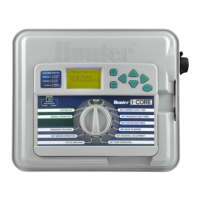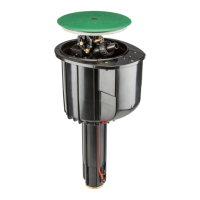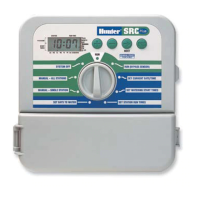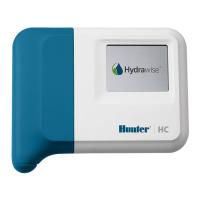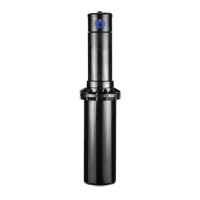inleT VAlVe ReMoVAl
–
g900 SeRieS
With the main-line or sub-main depressurized, the riser assembly removed, the water extracted from the body cavity
and the safety interlock feature disengaged, proceed with removal of the G900’s white lower snap-ring and inlet valve
as follows:
First, notice that close to each end of the white lower snap-ring there are eyelets (areas with a hole for access). These
two eyelets are used to remove the white lower snap-ring (g 88).
To remove the white lower snap-ring, insert the metal end of the Snap-Ring Tool into one of the eyelets. Next, twist
the Snap-Ring Tool’s handle while forcing the tip of the tool towards the center of the rotor’s body cavity (g 89). This
action will disengage one end of the white lower snap-ring from the recessed groove at the base of the rotor’s body.
With the white lower snap-ring disengaged from the groove, pull the tool upward to remove the white lower snap-
ring (g 90).
Once the white lower snap-ring has been removed, the inlet valve is released and is ready for removal. G900 Series
inlet valves are removed from the body using the G900 Valve Tool. Prior to using the tool, familiarize yourself with the
individual features of the G900 Valve Tool. First, notice there are hooks at the end of each metal bar (g 91). These
hooks are used to grab/hook the inlet valve for removal from the rotor’s body. The black plastic part of the G900 Valve
Tool includes physical features that hold or nest the inlet valve to the tool during inlet valve removal and installation.
In order to engage the inlet valve with the G900 Valve Tool properly, you must be familiar with the pointing and
alignment features on the tool’s black plastic part. First, look at the top inside diameter (inner circle) of the black
plastic part on the tool. Next, nd the small pointer arrow that protrudes towards the center (g 92). This pointer is
used to indicate the direction and alignment that the tool must have as it is inserted into the rotor’s body.
Directly below the pointer on the underside of the G900 Valve Tool there are a series raised tabs. The tab directly
below the pointer appears to be missing but this gap between tabs is intentional (it is designed to be this way). When
the tool is nested to the valve, the gap provides clearance for the inlet valve’s communication port (g 93).
FIG 88
FIG 91
FIG 89
FIG 92
FIG 90
FIG 93
30
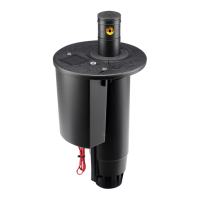
